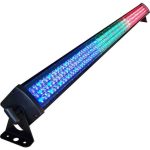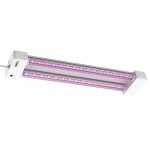4 Foot LED Light Amp Draw: Understanding the Power Consumption of Modern Lighting

In recent years, LED lighting has become increasingly popular due to its energy efficiency and long lifespan. However, understanding the power consumption of modern lighting is crucial in determining the viability of LED lighting options. One of the most important factors to consider when evaluating LED lighting is the amp draw, which refers to the amount of electricity that is drawn by a particular lighting fixture. In this discussion, we will take a closer look at the 4 foot LED light amp draw and explore how it impacts energy efficiency, operational costs, and overall performance. When it comes to energy-efficient lighting options, LED lights are undoubtedly at the forefront. Unlike traditional lighting technologies, LED lights consume much less power, produce less heat, and last significantly longer. However, not all LED lights are created equal, and understanding the amp draw of a particular light fixture is essential to make informed decisions. The 4 foot LED light is one of the most commonly used LED lighting options in commercial, industrial, and residential settings. By examining the amp draw of 4 foot LED lights, we can gain valuable insights into their energy efficiency and overall performance, which can help us make informed decisions when selecting lighting options for various applications.
LED lighting technology has revolutionized the lighting industry due to its high energy efficiency, long lifespan, and durability. LEDs (light-emitting diodes) are semiconductor devices that emit light when an electric current passes through them. Compared to traditional lighting technologies such as incandescent and fluorescent bulbs, LEDs consume significantly less power and produce less heat, making them ideal for use in a wide range of applications. Additionally, LED lights are available in a variety of colors and can be dimmed or controlled remotely, providing greater flexibility and energy savings. With the increasing demand for energy-efficient lighting solutions, LED technology is rapidly becoming the preferred choice for both residential and commercial lighting.
Understanding power consumption is crucial in achieving energy efficiency, especially in the case of modern lighting systems. By knowing the amp draw of a 4-foot LED light, for instance, it is possible to determine the amount of energy it consumes and how much it costs to operate. Such insights are essential in reducing energy bills, improving sustainability, and conserving natural resources. Moreover, having a clear understanding of power consumption can help individuals and organizations make informed decisions about lighting options, such as switching to energy-efficient LED lights or adopting smart lighting systems that can further optimize energy use. Therefore, understanding power consumption is not only important for economic reasons but also for environmental and social benefits.
What is an Amp Draw?
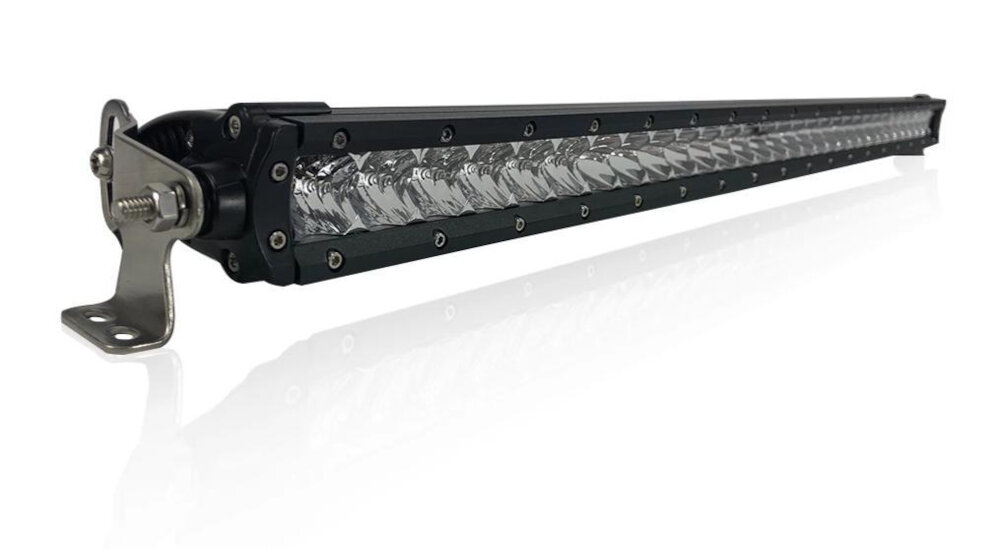
An amp draw is an electrical term that refers to the amount of current a device or appliance draws from a power source. It is measured in amperes or amps, which is the unit of measurement for electric current. Understanding the amp draw of a device is crucial when it comes to determining its power consumption and ensuring that it is compatible with the electrical system it is being used with. In the context of modern lighting, such as 4-foot LED lights, understanding the amp draw is essential to prevent overloading the electrical system and causing electrical hazards. The amp draw of a 4-foot LED light is determined by the wattage of the light and the voltage of the electrical system it is connected to. The lower the wattage of the light, the lower the amp draw will be. LED lights are known for their energy efficiency and low power consumption, which means that they have a lower amp draw compared to traditional lighting sources. By understanding the amp draw of 4-foot LED lights, users can ensure that they are using the appropriate electrical system and wiring to power the lights, which will help to minimize energy costs and reduce the risk of electrical hazards.
Amp draw is a fundamental concept in the field of electrical engineering that refers to the amount of electrical current drawn by a device or equipment. In the context of the 4 Foot LED Light Amp Draw, it represents the amount of current required to power a modern LED lighting system. Typically, amp draw is measured in amperes (A) and is an essential consideration when evaluating the power consumption of electrical components. Understanding the concept of amp draw is particularly crucial in the era of modern lighting, where energy efficiency and conservation are critical factors. By knowing the amp draw of LED light fixtures, consumers can make informed decisions when selecting lighting options that minimize energy usage and reduce operating costs.
Understanding the power consumption of modern lighting, such as 4-foot LED lights, is crucial for achieving energy efficiency. The amount of power an LED light draws is directly related to its energy efficiency. LED lights consume less power than traditional lighting options, such as fluorescent bulbs, while still providing the same or even better brightness. This means that switching to LED lights can significantly reduce power consumption and ultimately lead to energy savings. By understanding the amp draw of 4-foot LED lights, consumers and businesses can make informed decisions about their lighting choices, ultimately reducing their carbon footprint and energy costs.
LED lights are an energy-efficient alternative to traditional lighting sources, but it’s important to understand how much power they consume. The common amp draw for a 4-foot LED light can vary depending on the wattage and the number of LEDs in the fixture. For example, a 40-watt LED light with 120 LEDs will typically draw around 0.33 amps, while a 60-watt LED light with 180 LEDs will draw around 0.5 amps. It’s important to note that these figures are approximate and can vary based on the specific LED light model. Understanding the amp draw of your LED lights can help you determine how many lights you can safely use on a single circuit and avoid electrical overloads.
Factors Affecting Amp Draw
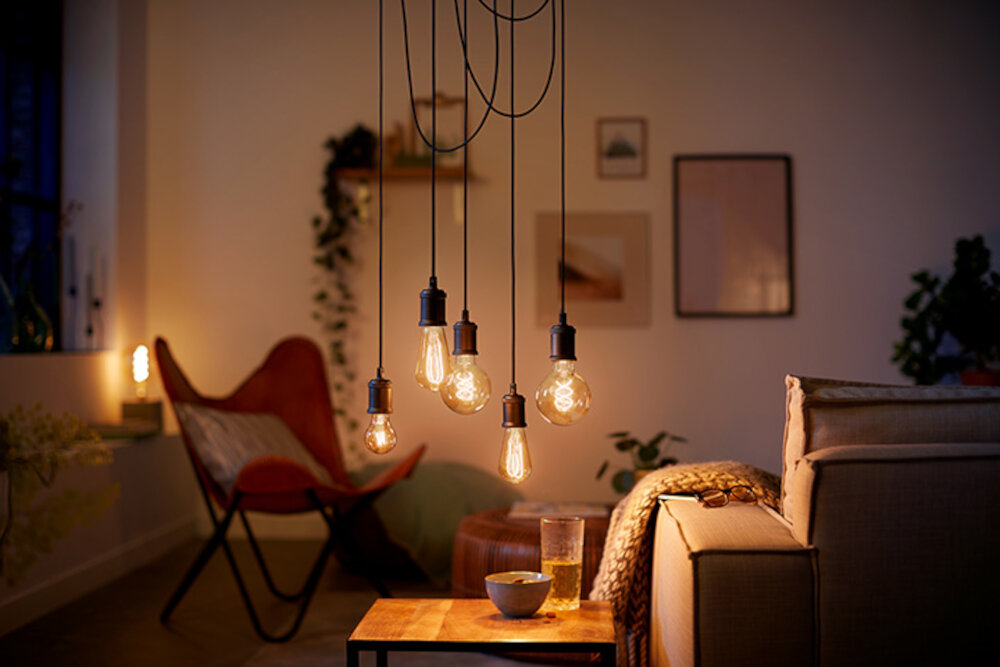
One of the most important factors affecting amp draw in modern lighting is the type of bulb being used. LED bulbs, for example, tend to draw much less power than traditional incandescent bulbs. This is because LED bulbs are much more efficient at converting electrical energy into light, resulting in less energy being wasted as heat. Other factors affecting amp draw include the size and wattage of the bulb, as well as the voltage and frequency of the power supply. In general, larger and more powerful bulbs will draw more amps, while lower voltage and frequency power supplies may also lead to increased amp draw. Another factor affecting amp draw in modern lighting is the presence of additional features, such as dimming functionality or smart controls. These features may require additional wiring or circuitry, which can increase the overall amp draw of the lighting system. Additionally, the overall design and placement of the lighting can also affect amp draw, as poorly designed systems may require more power to achieve the desired light output. Understanding the factors affecting amp draw in modern lighting is essential for ensuring that lighting systems are designed and installed in a way that maximizes efficiency and minimizes energy consumption.
Voltage, also known as electric potential difference, is a measure of the force that drives an electric current through a circuit. It is typically measured in volts and represents the amount of energy required to move one coulomb of electric charge from one point to another. In the context of lighting, voltage plays a crucial role in determining the power consumption of modern LED lights. By understanding the voltage requirements of a particular LED light, it is possible to optimize its power usage and ensure that it operates at peak efficiency. This can help to reduce energy costs and minimize environmental impact, making LED lighting an attractive option for both residential and commercial applications.
Wattage is a term used to measure the amount of power a device or appliance uses. It is a unit of measurement for the rate of energy conversion or consumption per unit of time. In the context of lighting, wattage refers to the amount of power consumed by a light fixture or bulb. With the advent of modern LED lighting technology, wattage has become an even more important consideration. LED lights use significantly less wattage than traditional lighting sources, making them more energy-efficient and cost-effective. Understanding wattage and its implications is crucial when selecting the right lighting solution for your needs. By choosing LED lighting with a lower wattage, you can save money on your energy bills while still enjoying bright, long-lasting illumination.
LED chip efficiency is a critical factor in the performance and power consumption of modern lighting. These chips have revolutionized the lighting industry by providing bright and energy-efficient illumination. The efficiency of an LED chip is measured by its ability to convert electrical energy into light energy. This conversion efficiency is typically expressed as the number of lumens produced per watt of power consumed. Higher efficiency means more lumens per watt, which translates into brighter light and lower energy consumption. The development of new materials and manufacturing processes has led to significant improvements in LED chip efficiency over the last few years, making them a highly attractive lighting option for commercial and residential applications.
Driver efficiency plays a crucial role in the power consumption of modern lighting systems. It is the measure of how effectively the driver, which controls the amount of current flowing through the LED light source, converts the input power into output power. A highly efficient driver will convert a greater percentage of the input power into usable output power, resulting in lower energy wastage and reduced operating costs. Modern LED lighting systems often incorporate advanced driver technologies such as dimming and motion sensors to further improve efficiency and flexibility. Understanding driver efficiency is essential for manufacturers, installers, and end-users to make informed decisions about the selection, installation, and maintenance of LED lighting systems.
Temperature is a crucial factor to consider when it comes to the performance and lifespan of modern lighting such as 4-foot LED lights. These lights emit less heat than traditional lighting, which is a good thing since high temperatures can negatively impact their efficiency and longevity. However, it’s important to note that LED lights still produce some heat, which can accumulate in enclosed spaces and affect their performance. Additionally, extreme temperatures, whether hot or cold, can also impact the function and lifespan of LED lights. Therefore, it’s important to ensure proper ventilation and temperature control when using modern lighting to maximize their efficiency and lifespan.
How to Measure Amp Draw

Measuring amp draw is a crucial step in understanding the power consumption of modern lighting, especially for LED lights. To measure the amp draw of an LED light, you will need a multimeter, which is a device that measures electrical current, voltage, and resistance. First, you need to turn off the power supply to the light and disconnect it from any power source. Then, connect the multimeter to the light’s power source by inserting the probes into the positive and negative terminals. Set the multimeter to measure DC amps and turn on the power supply. The multimeter will display the amp draw of the LED light, which will help you understand how much power it consumes. It is essential to measure the amp draw of LED lights because it can help you determine the amount of energy and cost savings they offer compared to traditional lighting systems. LED lights are much more energy-efficient than traditional lighting systems, which means they consume less power and have a lower amp draw. By measuring the amp draw of LED lights, you can calculate their power consumption and compare it to traditional lighting systems to determine the energy and cost savings they offer. This information can be helpful when choosing the right lighting system for your home or business or when trying to reduce your energy bills.
To accurately understand the power consumption of modern lighting, it’s important to have the right tools at hand. A good quality multimeter is essential for measuring the amperage of your 4 foot LED light. Additionally, a wattmeter can provide valuable information on the actual power being consumed by your lighting system. An ammeter clamp can also be useful in measuring the amperage without interrupting the circuit. Lastly, a power analyzer can give detailed information on the voltage, current, and power being consumed by your lighting system, allowing for a more precise understanding of its energy usage. By using these tools in combination, you can gain a comprehensive understanding of your 4 foot LED light’s amp draw, helping you to make informed decisions about energy usage and cost savings.
Measuring amp draw is a crucial step in understanding the power consumption of modern lighting, such as 4-foot LED lights. The step-by-step process involves first obtaining a digital amp meter and setting it to measure direct current (DC). Then, the light’s power source is turned on, and the positive and negative leads of the meter are attached to the corresponding wires of the light. The meter’s reading will display the amp draw of the light, which can be used to calculate the power consumption and estimate energy costs. It is important to ensure that the meter’s range is appropriate for the light’s amp draw to avoid damaging the meter or obtaining inaccurate readings. Overall, measuring amp draw is a straightforward process that can provide valuable insights into the energy efficiency of modern lighting.
Using Amp Draw to Calculate Energy Usage
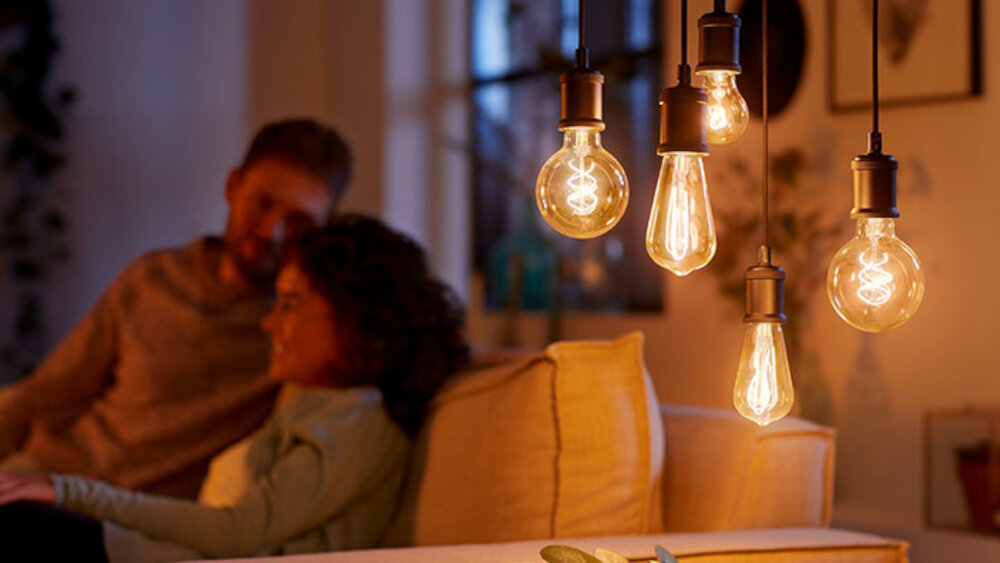
When it comes to understanding the power consumption of modern lighting, one useful tool is amp draw. Amp draw refers to the amount of electrical current that is flowing through a circuit at any given moment. By measuring the amp draw of a lighting system, we can gain insight into how much energy it is using at any given time. This can be helpful for determining the overall energy usage of a lighting system and identifying areas where energy savings can be achieved. To calculate energy usage using amp draw, it is important to know the voltage of the lighting system. Once you have this information, you can use a simple formula to determine the watts being used. This formula is watts = amps x volts. By knowing the watts being used, you can then calculate the kilowatt hours (kWh) being used over a certain period of time. This can help you to understand the energy usage of your lighting system and identify ways to reduce it, such as by using more efficient LED bulbs or implementing lighting controls. Overall, understanding amp draw and its relationship to energy usage is an important step in managing the energy consumption of modern lighting systems.
When it comes to calculating the energy usage of a lighting system, the formula to be used is a pretty straightforward one. You simply multiply the voltage of the system by the current in amps that it draws. This will give you the total power consumption of the system in watts. To determine the energy usage over a specific period of time, you can multiply this by the number of hours the system will be in use. It’s important to keep in mind that the actual energy usage may vary depending on factors such as the efficiency of the system and any losses that occur during transmission. However, by using this formula as a starting point, you can gain a better understanding of the power consumption of modern lighting systems like the 4 foot LED light.
When it comes to understanding the power consumption of modern lighting, amp draw and hours of use play a crucial role in determining the energy cost for a specific light fixture. As an example, let’s consider a 4-foot LED light with an amp draw of 0.5 amps and an average daily usage of 8 hours. To calculate the energy consumption, we need to multiply the amp draw by the voltage and the number of hours of use. Assuming the voltage to be 120 volts, the energy consumption per day would be 0.5 x 120 x 8 = 480 watt-hours. If the electricity cost is 10 cents per kilowatt-hour, the daily cost of operating this LED light would be 4.8 cents, and the monthly cost would be around $1.44. Hence, understanding the amp draw and hours of use can help us make informed decisions about our lighting choices and save energy and money in the long run.
In the article \4 Foot LED Light Amp Draw Understanding the Power Consumption of Modern Lighting,\ the key points discussed include the importance of understanding the power consumption of LED lights, which are highly energy-efficient but can still draw significant amounts of power. The article highlights the difference between amperage and wattage, and the importance of considering both when choosing LED lights. It also emphasizes the need for proper wiring and electrical components to prevent overload or damage to the lighting system. Overall, the article provides valuable insights into the power consumption of modern lighting and the factors that should be considered when selecting and installing LED lights.
Understanding amp draw is crucial for achieving energy efficiency when it comes to modern lighting. It is important to comprehend how much electricity is being consumed by the lighting system in order to make informed decisions about reducing energy costs and improving the overall sustainability of a building. By monitoring the amp draw of LED lights, for example, building owners and facility managers can identify any inefficiencies in the lighting system and take steps to rectify them. This not only helps to reduce energy consumption, but also results in long-term cost savings and a positive environmental impact. Therefore, having a solid understanding of amp draw is a fundamental aspect of effective energy management in any modern building.
Overall, the benefits of LED lighting and managing power consumption cannot be overstated. LED lighting provides a more efficient and cost-effective alternative to traditional lighting options, offering higher-quality lighting and longer lifespans. In addition, managing power consumption is essential for reducing energy costs and promoting sustainability. By implementing energy-efficient lighting solutions and monitoring power usage, individuals and organizations can help minimize their impact on the environment while also enjoying significant cost savings. Ultimately, embracing LED lighting and responsible power management is a smart and responsible choice for anyone looking to improve their lighting quality, reduce energy consumption, and save money in the long run.
Conclusion
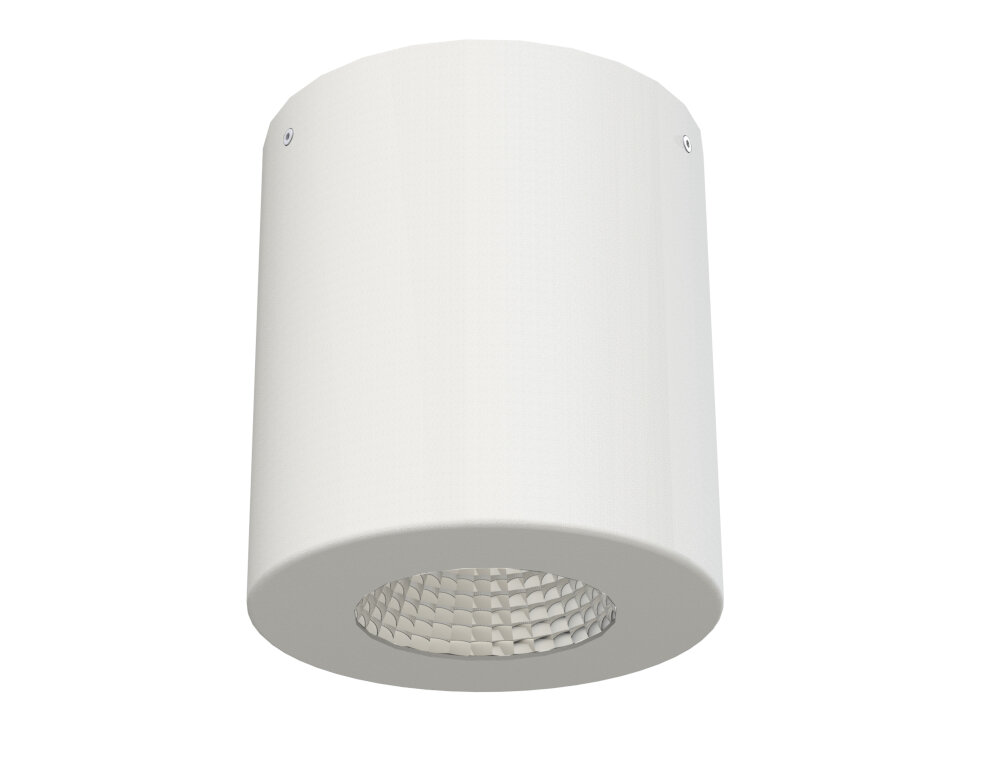
In conclusion, understanding the power consumption of modern lighting is essential, especially when it comes to 4-foot LED light amp draw. As the world continues to shift towards energy-efficient lighting solutions, it is important to keep in mind the power requirements of these modern lighting fixtures. By knowing the amp draw of your 4-foot LED lights, you can better plan your lighting needs while reducing your energy consumption and costs. It is crucial to choose the right LED lights that consume less power, produce less heat, and last longer. In this way, we can not only save energy but also contribute towards a sustainable environment.

